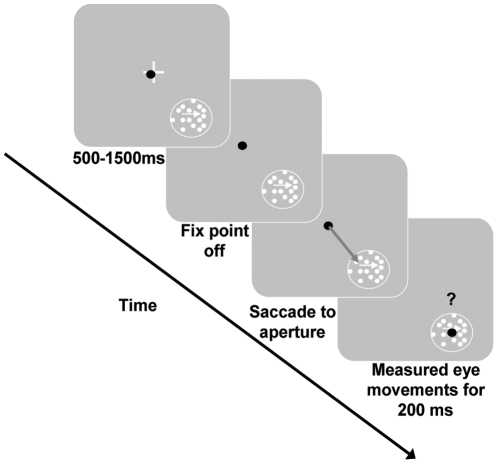Figure 1. Experimental paradigm.
Subjects fixated (eye position – black dot) on the white fixation cross (0.5°) at which point a 5° aperture appeared at 7° eccentricity in either the lower right or lower left quadrants. After a random period of time (500–1500 ms) the cross disappeared which was the signal to saccade to the aperture. The surface(s) in the aperture continued to move. Smooth eye movements were measured from 50–200 ms post-saccade. In Experiment 1, the aperture contained a single surface moving at either left or right (shown) and was 1 of 4 possible isoluminant colors (red, blue, green, or yellow). In Experiment 2, the aperture contained two superimposed surfaces moving in opposite directions. The surfaces were comprised of 1 of 6 possible color combinations: red-green, red-blue, red-yellow, green-blue, green-yellow and blue-yellow.

